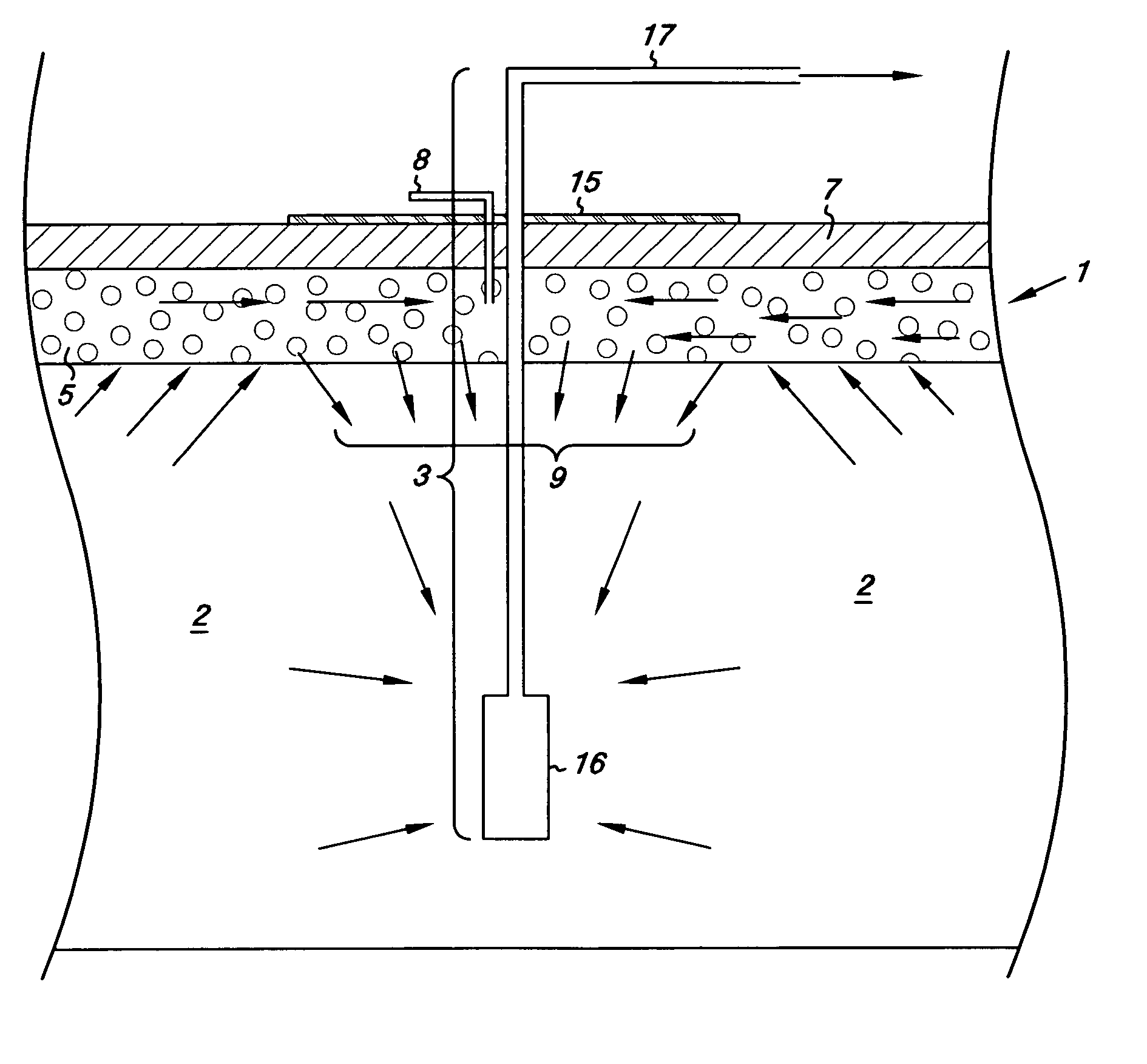Landfill design and method for improved landfill gas capture
a landfill gas and design method technology, applied in landfill technologies, applications, refuse collection, etc., can solve the problems of air intrusion almost always occurring, gas extraction rate from well b>3/b> may be too low, and achieve the effect of low gas permeability
- Summary
- Abstract
- Description
- Claims
- Application Information
AI Technical Summary
Benefits of technology
Problems solved by technology
Method used
Image
Examples
example 2
Numerical Analysis of Gas Collection. A Calculation of Highly Conductive Layer Application and Performance for Gas Collection Effectiveness
[0108] Definition of performance. Performance is defined here by two criteria: completeness of generated LFG collection, desirably over 90%, and limiting air entrainment, such that nitrogen from entrained atmospheric air is under 10% (and thus methane content over 50%, with LFG as generated at its “typical” 55% methane).
[0109] The following is an analysis of gas recovery using one example (of many possible) of the near-surface LFG-conducting (highly conductive) layer described in the preceding text. This example is chosen to be realistic and constructible. Parameters are chosen to be conservative. It is recognized that key parameters may actually range widely. Thus sensitivity of LFG recovery performance to changes in important parameters is discussed later.
[0110] Summary of LFG recovery performance. Finite element analysis indicates that the...
PUM
 Login to View More
Login to View More Abstract
Description
Claims
Application Information
 Login to View More
Login to View More - R&D
- Intellectual Property
- Life Sciences
- Materials
- Tech Scout
- Unparalleled Data Quality
- Higher Quality Content
- 60% Fewer Hallucinations
Browse by: Latest US Patents, China's latest patents, Technical Efficacy Thesaurus, Application Domain, Technology Topic, Popular Technical Reports.
© 2025 PatSnap. All rights reserved.Legal|Privacy policy|Modern Slavery Act Transparency Statement|Sitemap|About US| Contact US: help@patsnap.com



